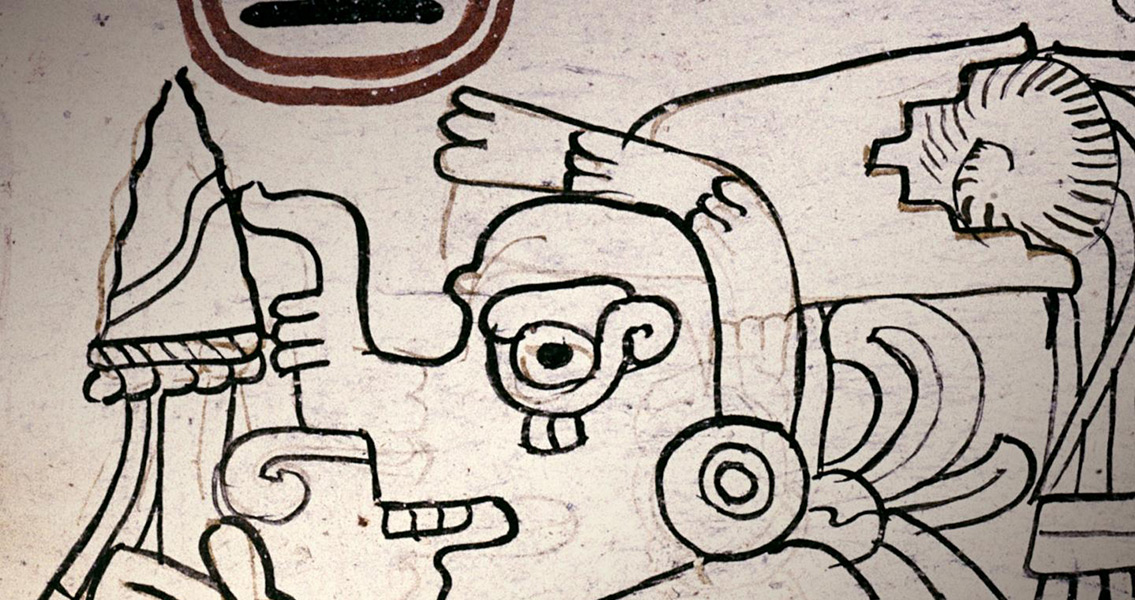<![CDATA[An in depth new study of the Grolier Codex, a mysterious Maya text, has concluded that it's both genuine and the most ancient surviving manuscript from the Americas. Looters reportedly unearthed the Grolier Codex in the 1960s from a cave in Chiapas, Mexico. The ancient document is among the rarest books in the world, but its authenticity has been regarded with skepticism ever since it was first discovered. Some argue that it must have been a forgery, claiming that at the time the codex came to light, forgers would have had enough knowledge about Maya writing, materials and culture to produce a believable fake. The story of the codex's discovery is a dramatic one, another cause for skepticism in some quarters. Josué Sáenz, a wealthy collector from Mexico, claimed that the looters contacted him after they had found the codex. He was then whisked away in an airplane, the on board compass covered up so he couldn't see the direction of flight, to a remote airstrip in Tortuguero, Mexico, to view the artefact. Further complicating the codex's already unusual story, Sáenz had it shipped to the USA to go on display in the Grolier Club (hence the codex's name). Cynics have questioned why the collector immediately allowed the codex to spend a year on display at a private members club in New York instead of keeping it in the land of its discovery: Mexico. Seemingly most damning, the manuscript itself appears to be markedly different to other Maya codices that have been discovered. Most noticeable is the relative lack of hieroglyphic text, and the prominence of its illustrations. "It became a kind of dogma that this was a fake," explained Stephen Houston, the Dupee Family Professor of Social Science and co-director of the Program in Early Cultures at Brown University, and one of the authors of the study. "We decided to return and look at it very carefully, to check criticisms one at a time. Now we are issuing a definitive facsimile of the book. There can't be the slightest doubt that the Grolier is genuine." Prof. Houston, along with team leader Michael Coe, professor emeritus of archaeology and anthropology at Harvard; Mary Miller of Yale; and Karl Taube of the University of California-Riverside; set about reviewing all known research on the manuscript to try and answer once and for all whether it is indeed a fake. The results, published in the journal Maya Archaeology, are: “… a confirmation that the manuscript, counter to some claims, is quite real.” said Houston, in a Brown University press release. Coe’s team carried out a rigorous analysis of the codex to reach their conclusion, looking at everything from the manuscript’s style and iconography, to the paper it was produced on. Most crucially, they radio carbon dated it and found it came from the thirteenth century, predating three other well known Mayan codices: the Dresden, Madrid and Paris – named after the cities in which they are now housed. The authors note that because the Dresden, Madrid and Paris codices were discovered first, their features are regarded as canonical. The Grolier is undoubtedly different to those three codices, but the authors argue that in itself isn’t proof it is inauthentic. Most significantly, Coe et al point out that it actually would have been almost impossible for forgers to have created the forgery by 1964. The Grolier Codex depicts in detail gods and deities which archaeologists had yet to discover at that point; while the illustrations and paintings contain perfect Maya blue pigments, pigments that were not successfully synthesised in a laboratory until the 1980s. As the authors write in the study: “A reasoned weighing of evidence leaves only one possible conclusion: four intact Mayan codices survive from the Precolumbian period, and one of them is the Grolier.” For more information: Journal of Maya Archaeology Image courtesy of Justin Kerr ]]>
Oldest Maya Codex Proven Authentic
